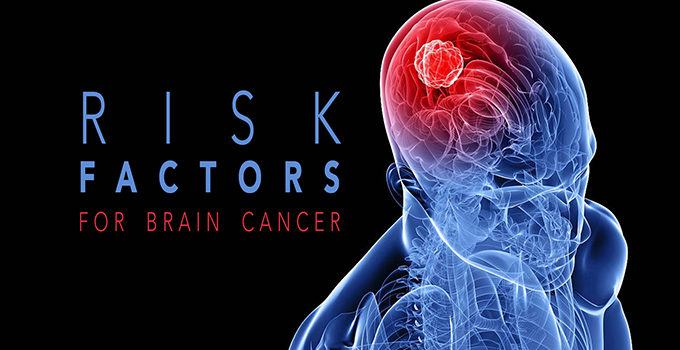

Risk Factors: Why did I get a Brain Tumor?
by Zara Jethani
Unfortunately there is no clear answer to this question. At this time, seeking out top neurosurgeons and high quality neuro-oncological care is the only way we have of dealing of brain, pituitary and skull base tumors. Looking at risk factors can give us some insight but nothing definitive.
The following is excerpted from Cancer.net.
A risk factor is anything that increases a person’s chance of developing a brain tumor. Although risk factors often influence the development of a brain tumor, most do not directly cause a brain tumor. Some people with several risk factors never develop a brain tumor, while others with no known risk factors do. However, knowing your risk factors and talking about them with your doctor may help you make more informed lifestyle and health care choices. At this time, there are no known ways to prevent a brain tumor.
Most of the time, the cause of a brain tumor is unknown, but the following factors may raise a person’s risk of developing a brain tumor:
Age. Brain tumors are more common in children and older adults, although people of any age can develop a brain tumor.
Gender. In general, men are more likely than women to develop a brain tumor. However, some specific types of brain tumors, such as meningioma, are more common in women.
Home and work exposures. Exposure to solvents, pesticides, oil products, rubber, or vinyl chloride may increase the risk of developing a brain tumor. However, there is not yet scientific evidence that supports this possible link.
Family history. About 5% of brain tumors may be linked to hereditary genetic factors or conditions, including Li-Fraumeni syndrome, neurofibromatosis, nevoid basal cell carcinoma syndrome, tuberous sclerosis, Turcot syndrome, and von Hippel-Lindau disease. Scientists have also found “clusters” of brain tumors within some families without a link to these known hereditary conditions. Studies are underway to try to find a cause for these clusters.
>>Pacific Neuroscience Institute note: In a study released online Feb. 5 in the journal Cancer Epidemiology, Biomarkers & Prevention, investigators found that a history of respiratory allergies, asthma and eczema was associated with a reduced risk for glioma.
>>This American Brain Tumor Association’s webinar goes into more detail about each of these risk factors particularly concerns regarding family history.
Exposure to infections, viruses, and allergens. Infection with the Epstein-Barr virus (EBV) increases the risk of CNS lymphoma. EBV is more commonly known as the virus that causes mononucleosis or “mono”. In other research, high levels of a common virus called cytomegalovirus (CMV) have been found in brain tumor tissue. The meaning of this finding is being researched. Several types of other viruses have been shown to cause brain tumors in research on animals. More data are needed to find out if exposure to infections, other viruses, or allergens increase the risk of a brain tumor in people.
Electromagnetic fields. Most studies evaluating the role of electromagnetic fields, such as energy from power lines or from cell phone use, show no link to an increased risk of developing a brain tumor in adults. Because of conflicting information regarding risk in children, the World Health Organization (WHO) recommends limiting cell phone use and promotes the use of a hands-free headset for both adults and children.
>>Pacific Neuroscience Institute note: When this issue was brought into question again, Dr. Garni Barkhoudarian, neurosurgeon at PNI reported recently that he concurred with WHO’s assessment and recommendation.
>> Electromagnetic fields are being used successfully to help treat people with glioblastoma multiforme. Recently approved by the FDA, Tumor-treating fields (TTFields) technology disrupts the cancer cells’ DNA to stop them from multiplying.
Race and ethnicity. In the United States, Caucasian people are more likely to develop gliomas but less likely to develop meningioma than African American people. Also, people from northern Europe are more than twice as likely to develop a brain tumor as people in Japan.
Ionizing radiation. Previous treatment to the brain or head with ionizing radiation, including x-rays, has shown, in some cases, to be a risk factor for a brain tumor.
Head injury and seizures. Serious head trauma has long been studied for its relationship to brain tumors. Some studies have shown a link between head trauma and meningioma, but not one between head trauma and glioma. A history of seizures has long been associated with brain tumors, but because a brain tumor can cause seizures, it is not known if seizures increase the risk of brain tumors, if seizures occur because of the tumor, or if anti-seizure medication increases the risk.
N-nitroso compounds. Some studies of diet and vitamin supplementation seem to indicate that dietary N-nitroso compounds may raise the risk of both childhood and adult brain tumors. Dietary N-nitroso compounds are formed in the body from nitrites or nitrates found in some cured meats, cigarette smoke, and cosmetics. However, additional research is necessary before a definitive link can be established.
>>Pacific Neuroscience Institute note: While not specific to brain cancer, in a study published in late 2015, WHO’s International Agency for Research on Cancer concluded that processed meats and red meat were “probably carcinogenic to humans” and recommended lower consumption.
Exposure to nerve agents. One study has shown that some Gulf War veterans have an increased risk of a brain tumor from exposure to nerve agents; however, more research is needed before a definitive link can be made.
If you would like a second opinion on a diagnosis, please contact our center at 310-582-7640.
About the Author

Zara Jethani
Zara is the marketing director at Pacific Neuroscience Institute. Her background is in molecular genetics research and healthcare marketing. In addition, she is a graphic designer with more than 20 years experience in the healthcare, education and entertainment industries.
Last updated: May 5th, 2022